History of the business
Ship &
Offshore
Since the foundation of Kawasaki Tsukiji Shipyard, we have constructed many ships that described as “the first in Japan.”
Currently, as well as constructing LPG carriers, submarines, and other high value-added vessels, we are also constructing bulk carriers and large container ships in Nantong and Dalian, China. We are also working toward a decarbonized society by developing
liquefied hydrogen carrier ships.
-
1878/ Meiji 11
Establishment of Kawasaki Tsukiji Shipyard
Our founder, Shozo Kawasaki, borrowed 1400 m2 of land in Minami Iida-cho, Tsukiji, Tokyo from the government. There, he established Kawasaki Tsukiji Shipyard, taking his first step into the shipbuilding industry.
Kawasaki Tsukiji Shipyard’s first ship was a western-style wooden ship called the Hokkaimaru (80 t). Over a thousand people were invited to the launching ceremony in 1878, and a banquet was held.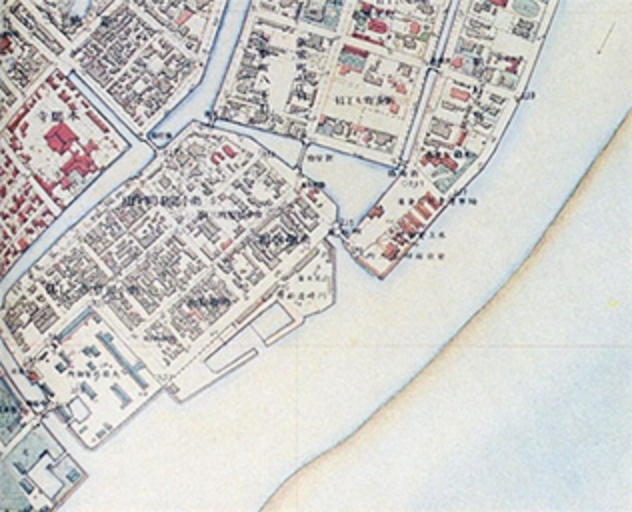
Tsukiji area in 1884
-
1881/ Meiji 14
Opening of Kawasaki Hyogo Shipyard
Shozo Kawasaki borrowed government-owned land and opened the Kawasaki Hyogo Shipyard in Higashidemachi, Hyogo Prefecture.
(Renamed to Kawasaki Dockyard in 1886) -
1896/ Meiji 29
Birth of Kawasaki Dockyard Co., Ltd.
In 1896, an inaugural general meeting was held at Shozo Kawasaki’s residence in Nunobiki, Kobe City, with eleven people as sponsors. We consider October 15 to be the anniversary of our founding.
Kojiro Matsukata, age 31 at the time, and the thrid son of then Prime Minister Masayoshi Matsukata, became the first president.
Shozo Kawasaki became his adviser.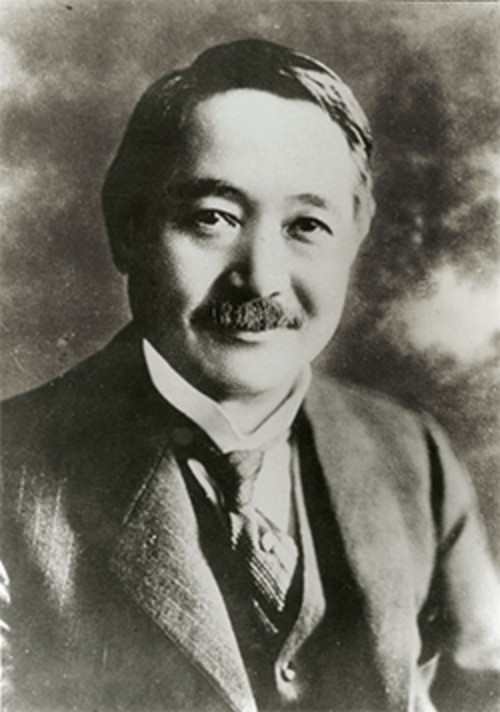
First president, Kojiro Matsukata
-
1897/ Meiji 30
Launch of cargo-passenger ship Iyomaru (Kawasaki Dockyard Co., Ltd.’s first ship)
After being reorganized into a joint-stock company, the first ship we constructed was Iyokisen’s cargo-passenger ship, the Iyomaru.
It was the first ship in Japan to be subjected to a new law promoting shipbuilding.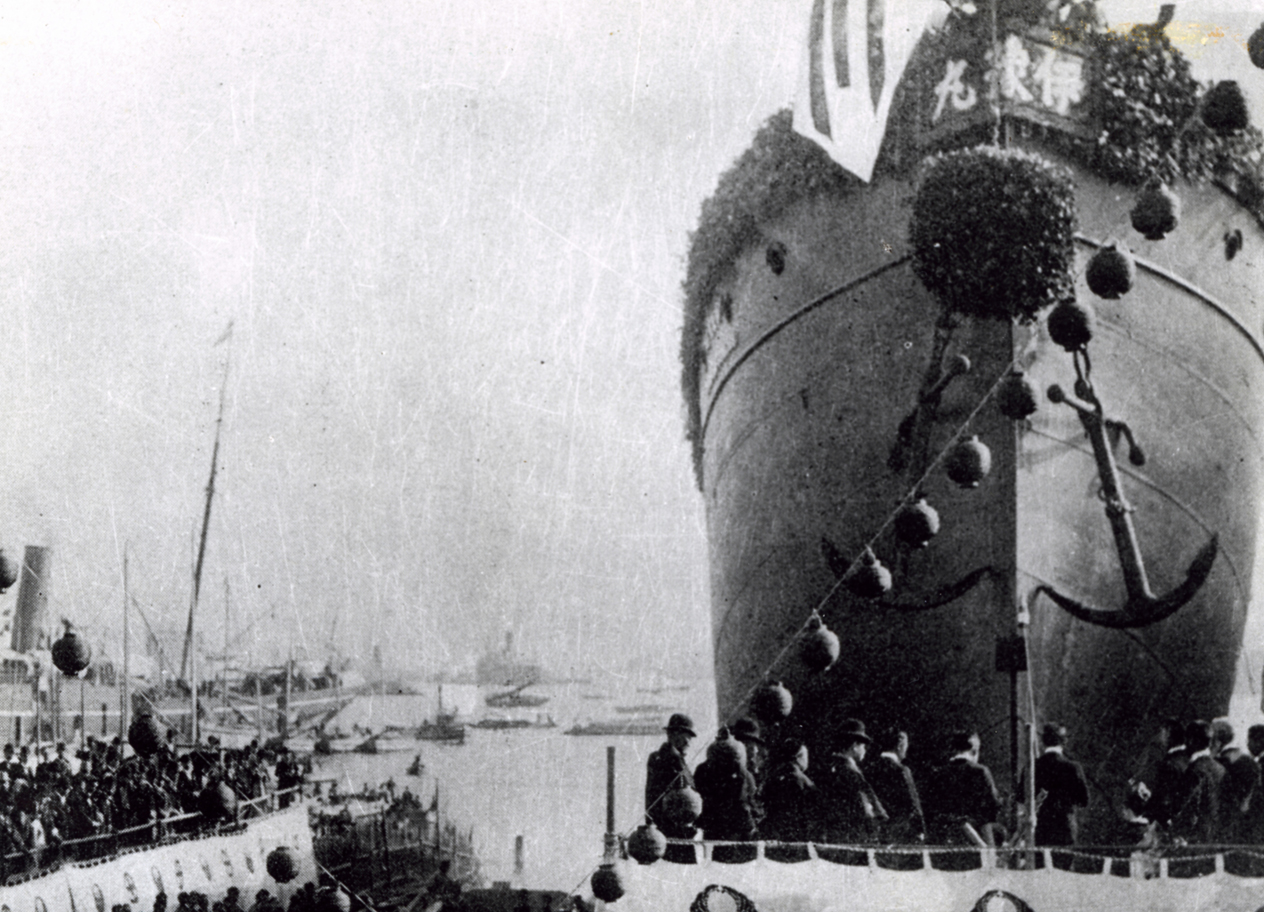
Cargo-passenger ship Iyomaru
-
1902/ Meiji 35
Completion of first dry dock
Straight after being appointed as the first company president, Kojiro Matsukata launched construction of the dry dock to allow for the building of large ships. The construction site reclaimed approximately 9.882m2 of the ocean surface, was completed in November 1902, taking six years to construct. (Length: 130 m; Width: 15.7 m; Depth: 5.5 m; Maximum size of ships that can be docked: 6,000 GT)
In 1998, it was registered as the first dry dock in Japan to be designated as a registered cultural property under the Law for the Protection of Cultural Properties.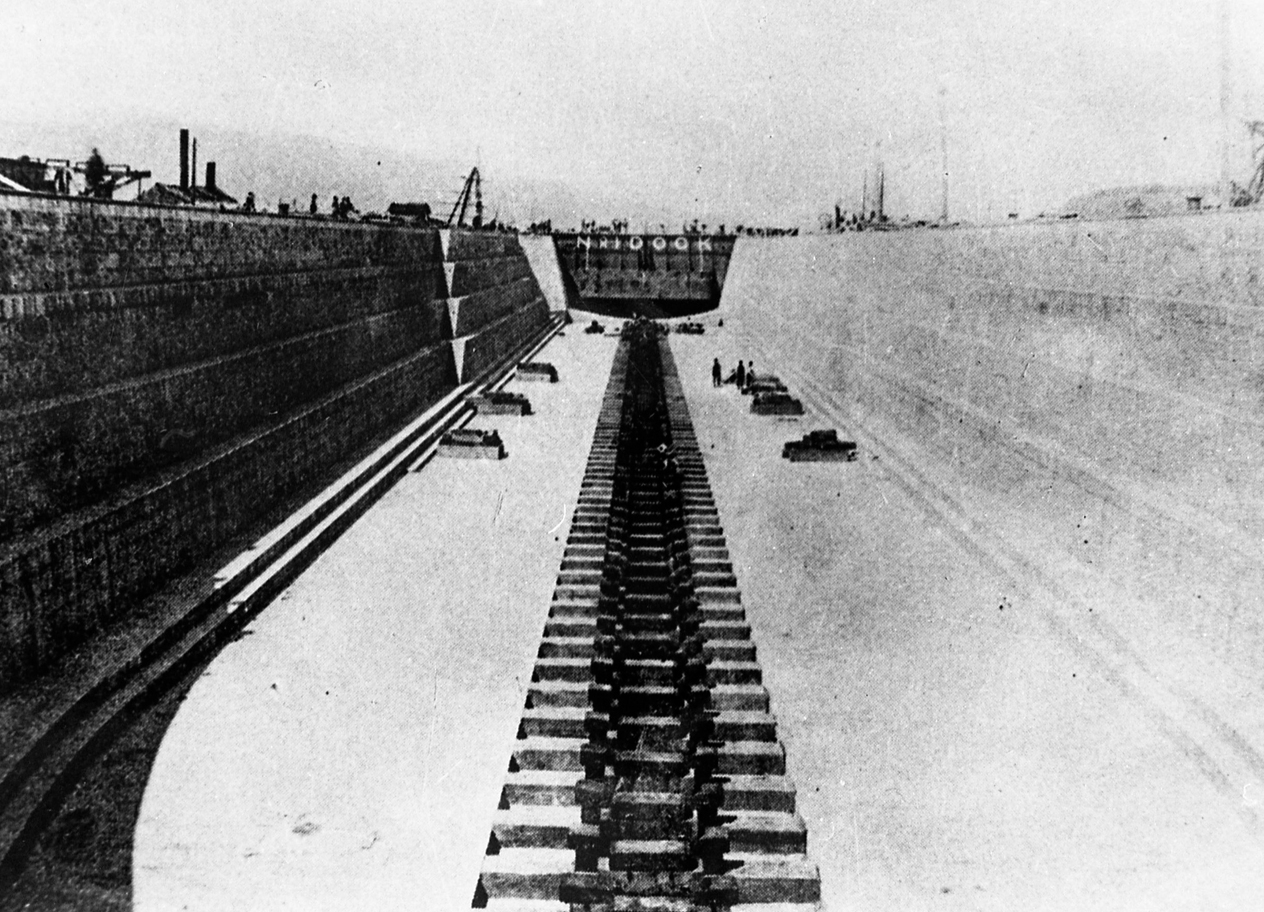
Completion of first dry dock
-
1906/ Meiji 39
Completion of the first Japanese-made submarines
Aiming to domesticate the production of submarines, technology was introduced from the United States, and the first two Japanese-made submarines were completed.
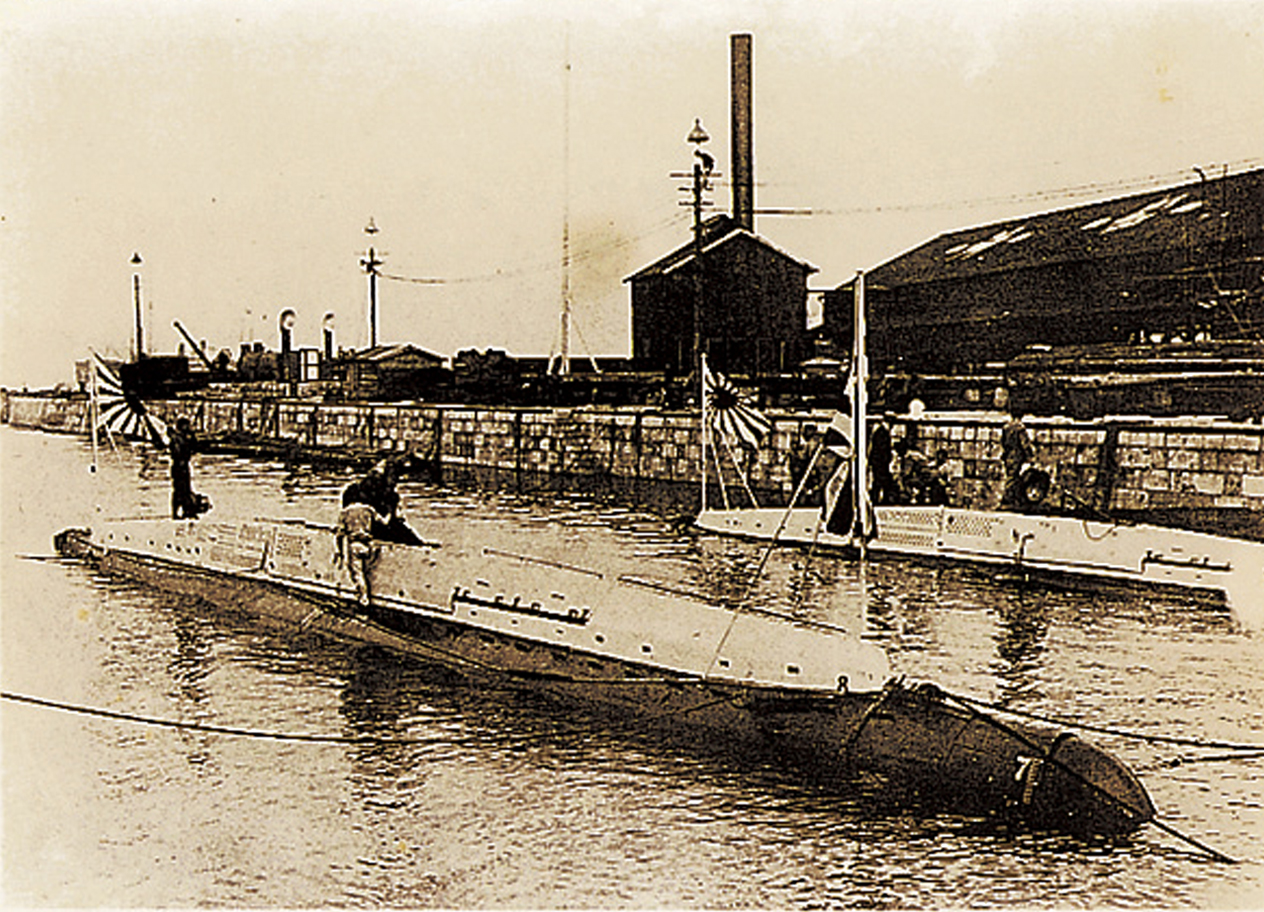
-
1908/ Meiji 41
Completion of Yodo, the first large warship by a private shipyard
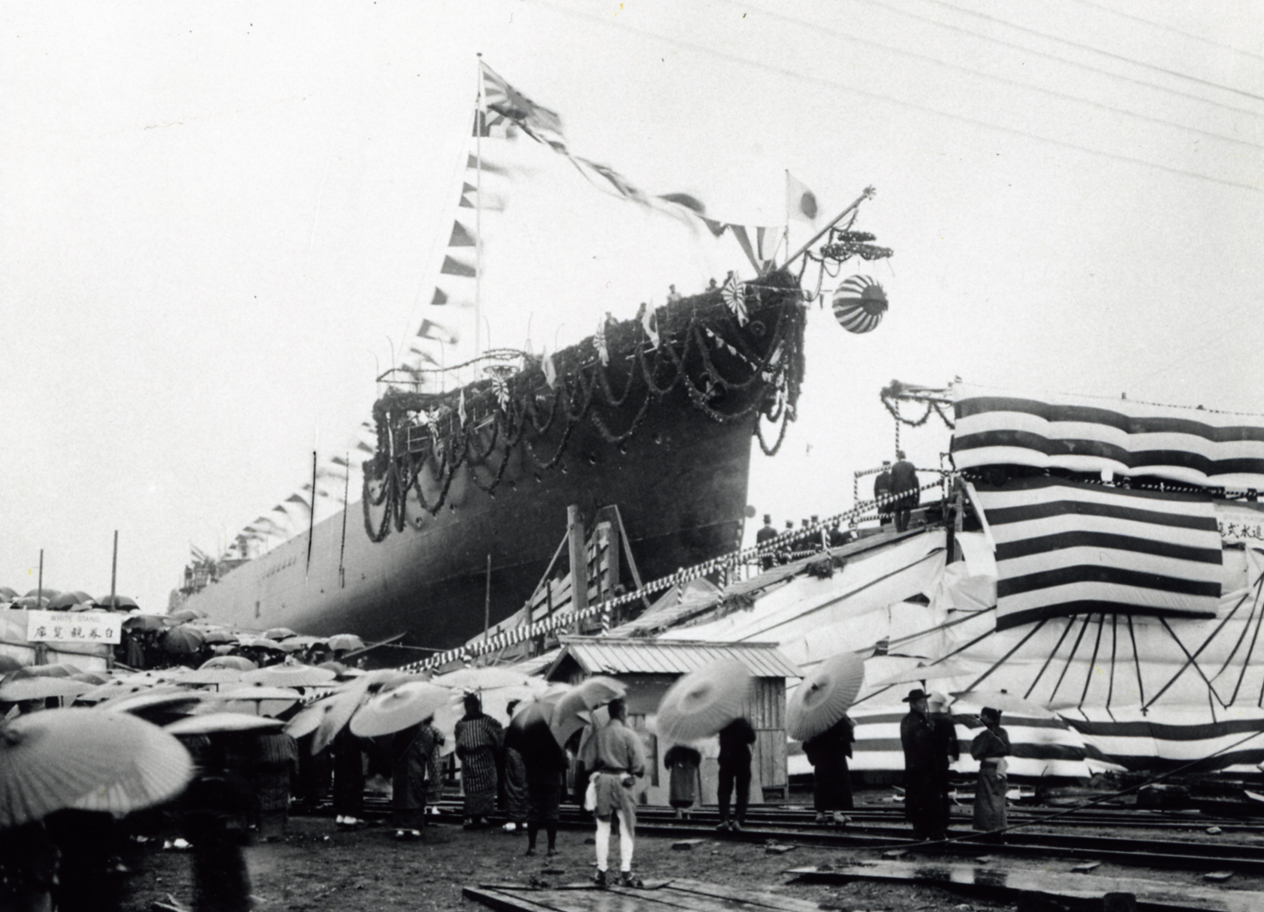
Completion of Yodo, the first large warship by a private shipyard
-
1915/ Taisho 4
Completion of Haruna, Japan’s first battle cruiser
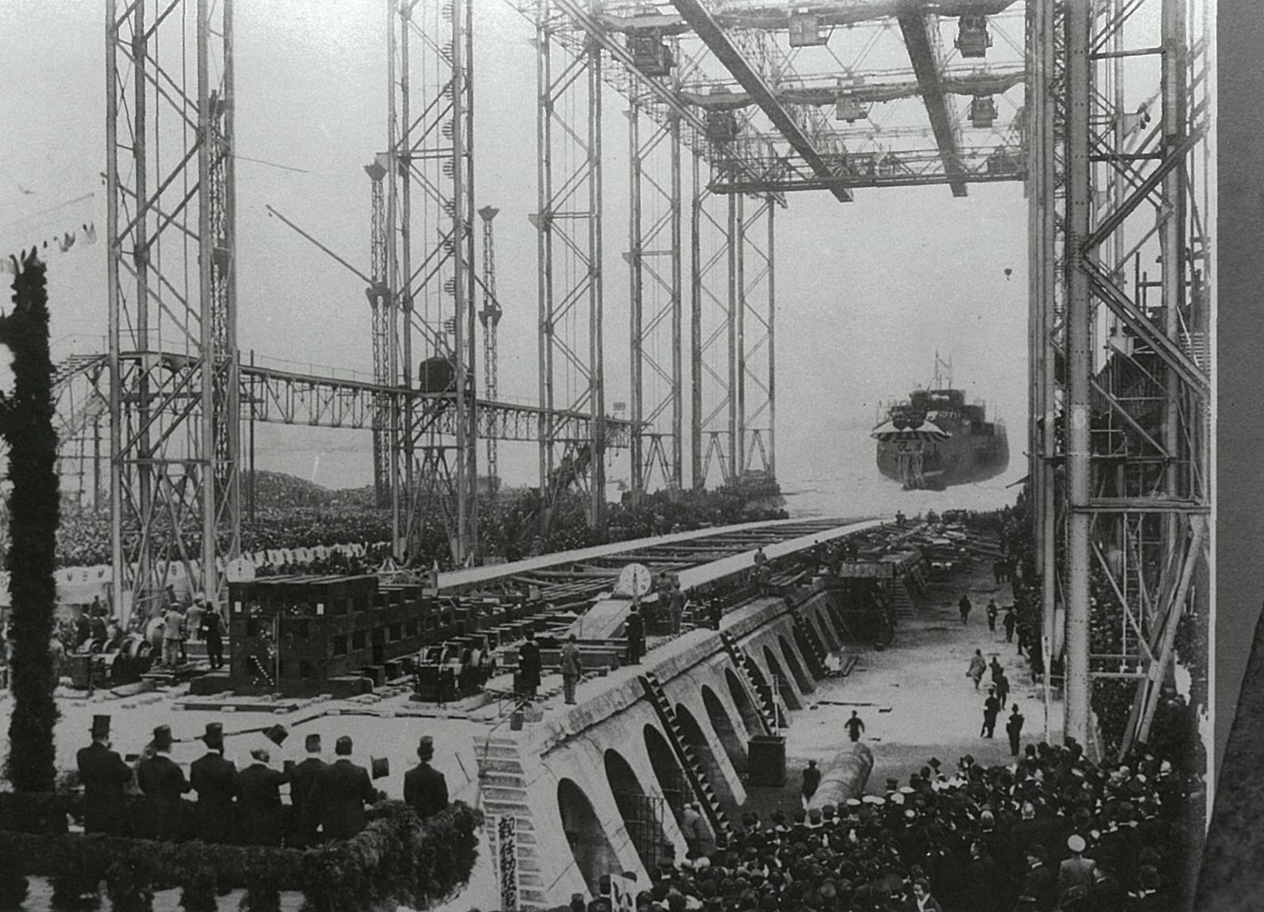
Scene of the launching ceremony for Haruna (Current Kobe Works No. 4 Building Berth)
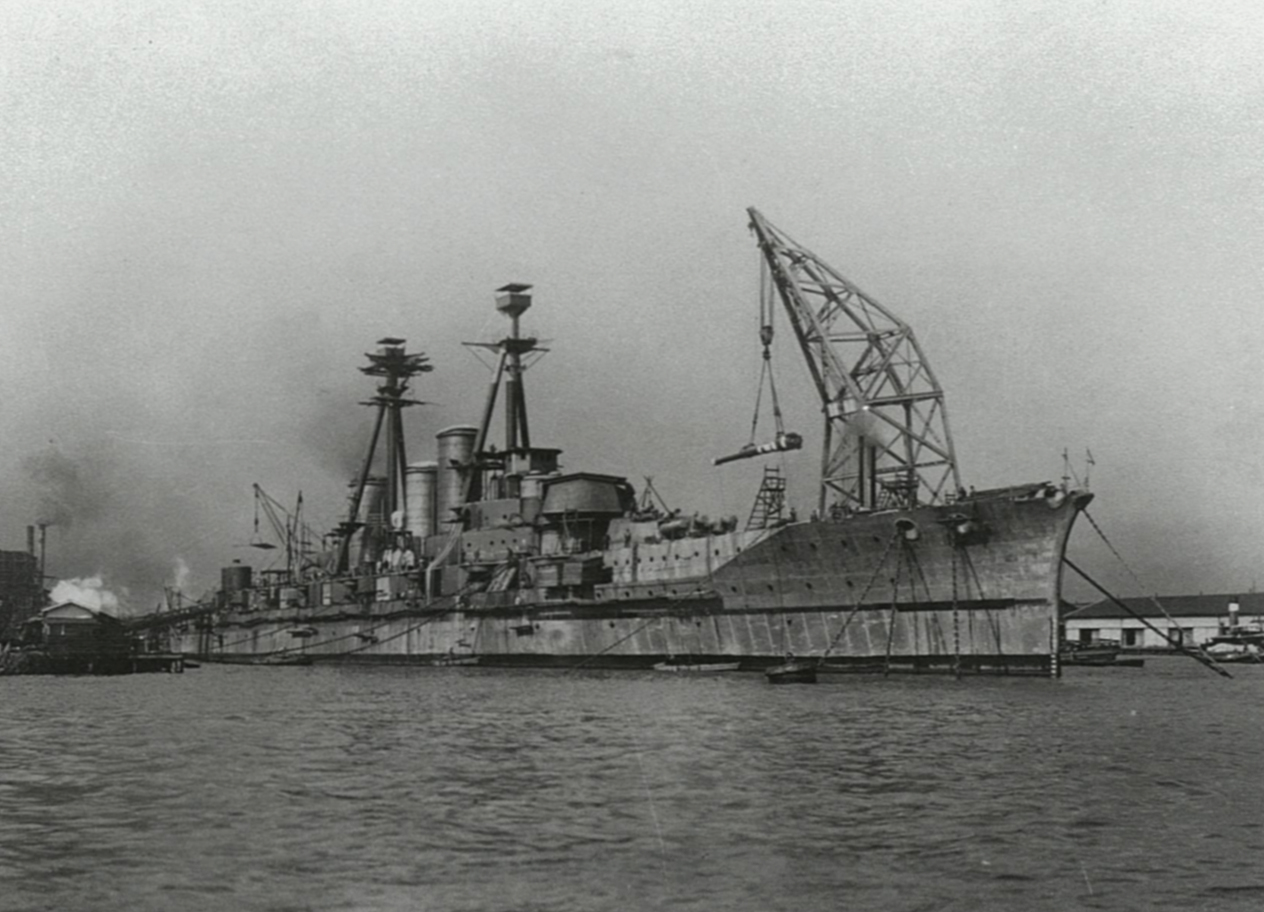
Nearing completion of Haruna
-
1950/ Showa 25
Completion of the large tanker, Fernmanor (18,384 DWT)
Japan’s first postwar ship for export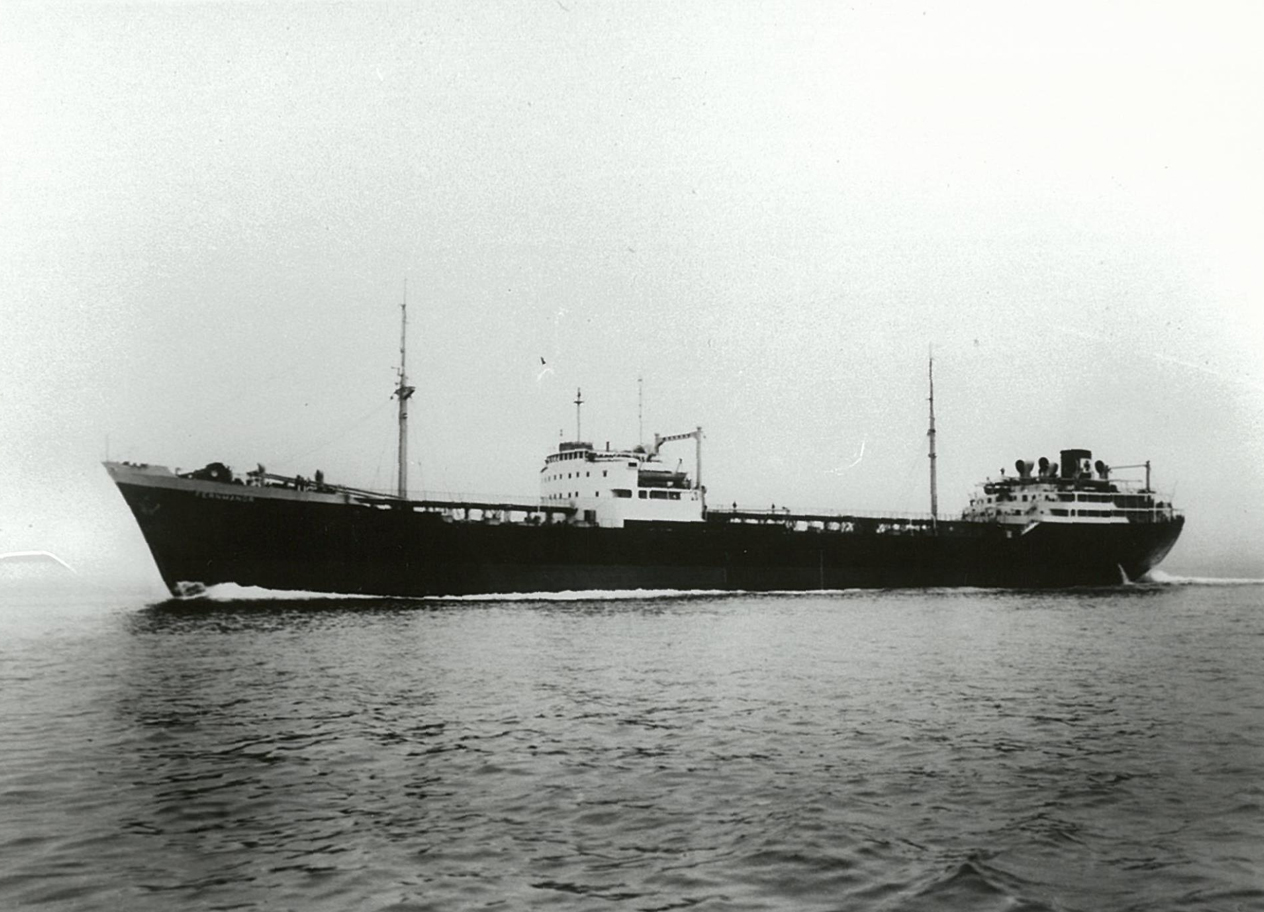
Large tanker, Fernmanor
-
1955/ Showa 30
Completion of Chrysanthy L, Japan’s largest (at the time) tanker
The main engine is equipped with a turbine. This turbine is the largest since the end of the war, and the first to have a propeller with five blades.
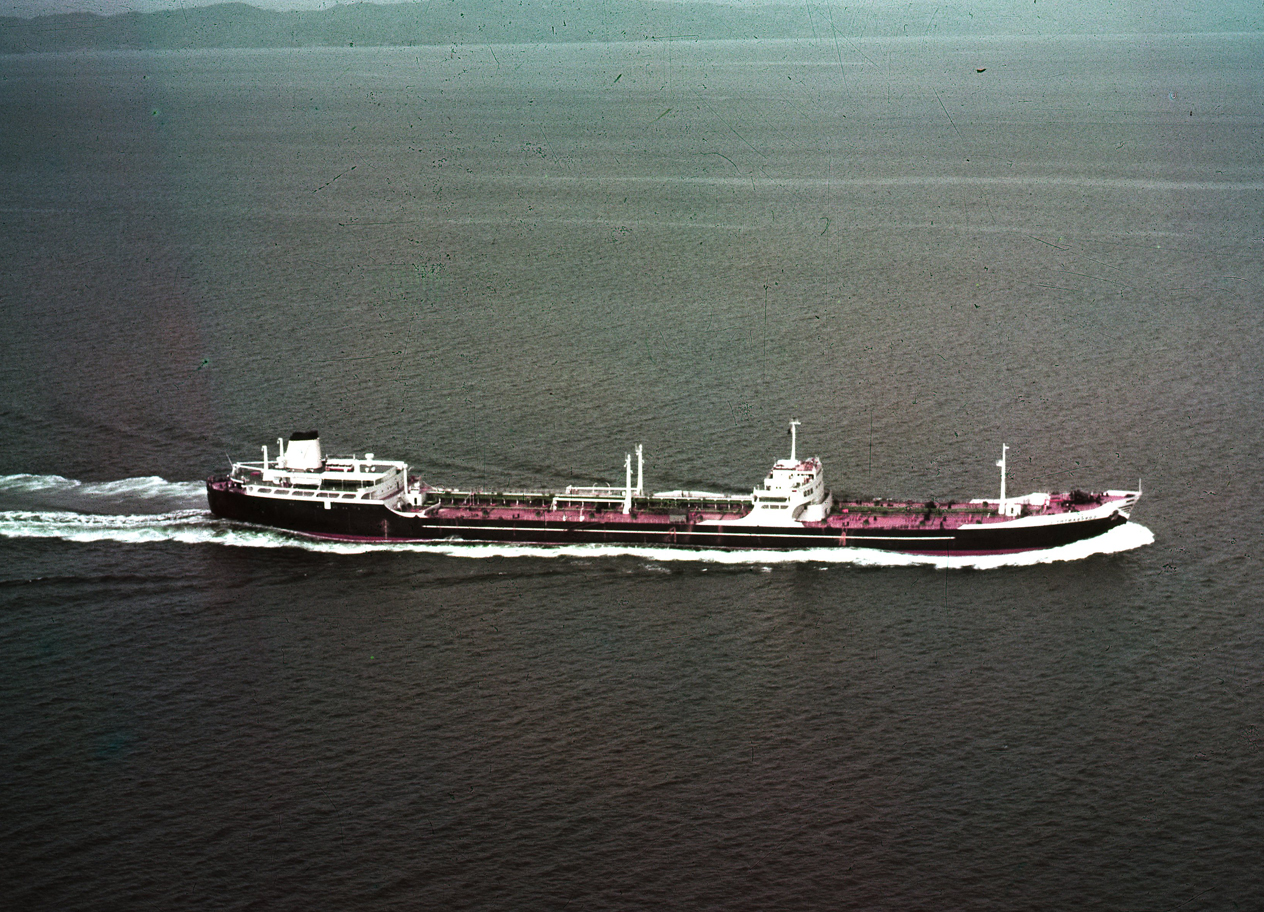
Chrysanthy L, Japan’s largest (at the time) tanker
-
1960/ Showa 35
Completion of the first Oyashio, the first Japanese-made submarine after the war
We replaced the prewar riveted structure with the all-welding structure, improving watertightness.
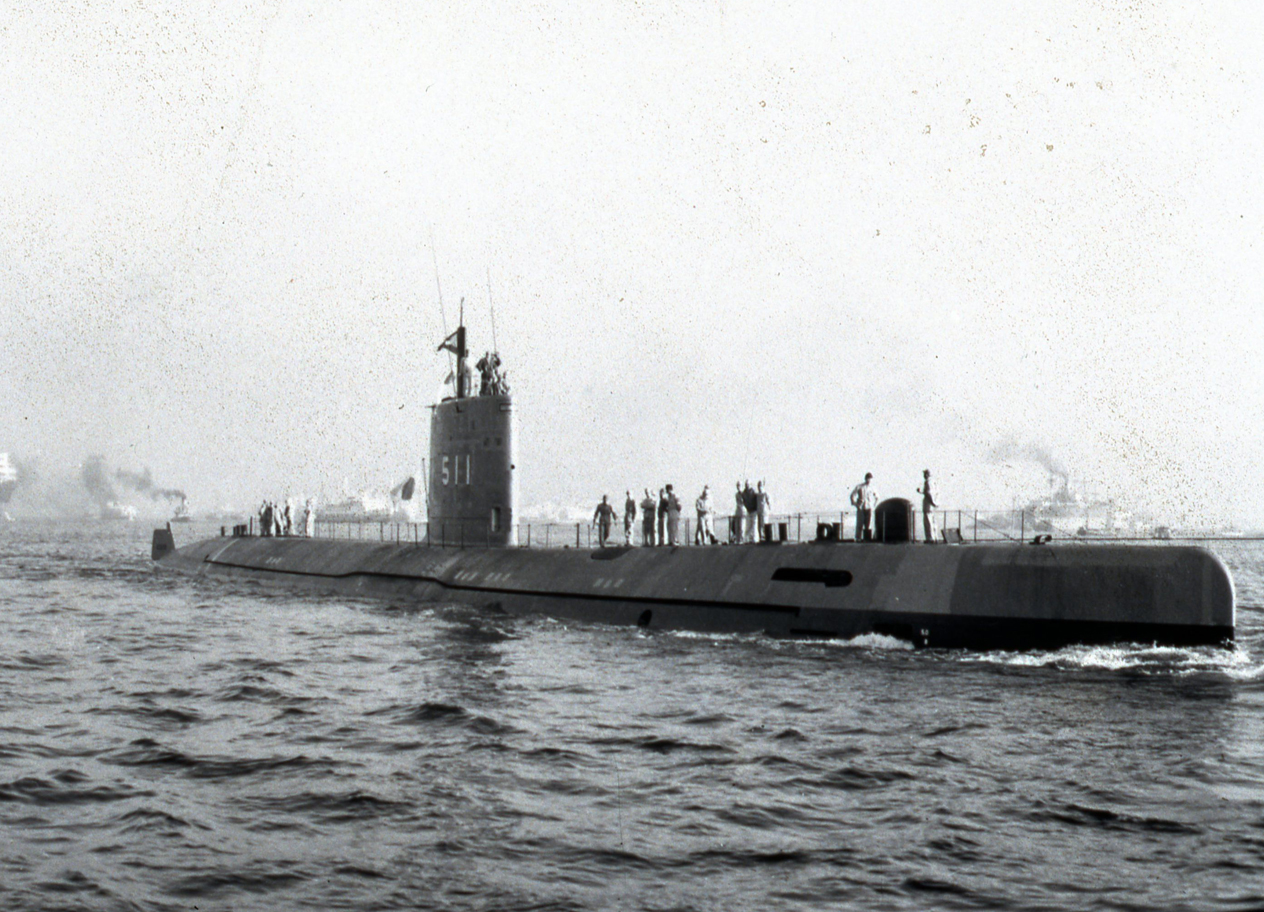
The first Oyashio, the first Japanese-made submarine after the war
-
1967/ Showa 42
Completion of Sakaide Works
In response to the size of ships increasing, a large shipyard with a logical layout was newly established.

Completion of Sakaide Works
-
1969/ Showa 44
Completion of Shinkai, the first Japanese-made research submersible
Leveraging our submarine construction technology, we entered the field of marine development (marine research and observation).
The Shinkai has a submerging depth of 600 m.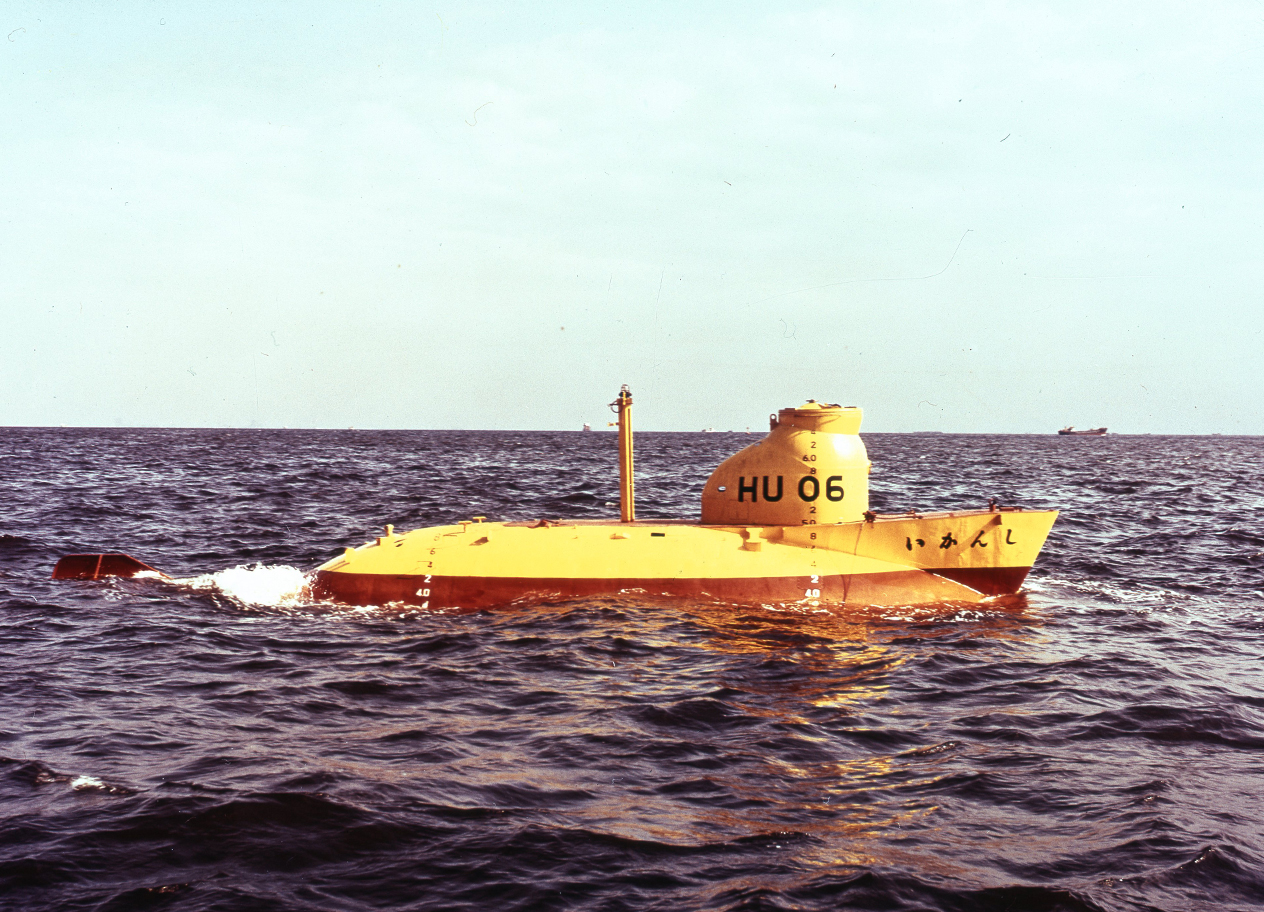
Shinkai, Japan’s first research submersible
-
1969/ Showa 44
Merger of three Kawasaki companies
Kawasaki Heavy Industries, Kawasaki Aircraft, and Kawasaki Rolling Stock Manufacturing were merged and newly launched as Kawasaki Heavy Industries, Ltd.
The goal of this was to expand the scale of the company, consolidate capital, and make comprehensive use of human resources, technological capabilities, and facilities. -
1970/ Showa 45
Completion of Toyota Maru No. 10, Japan’s first pure car carrier (PCC)
Equipped with a 9-layer car deck, and able to carry 2,000 or more passenger cars
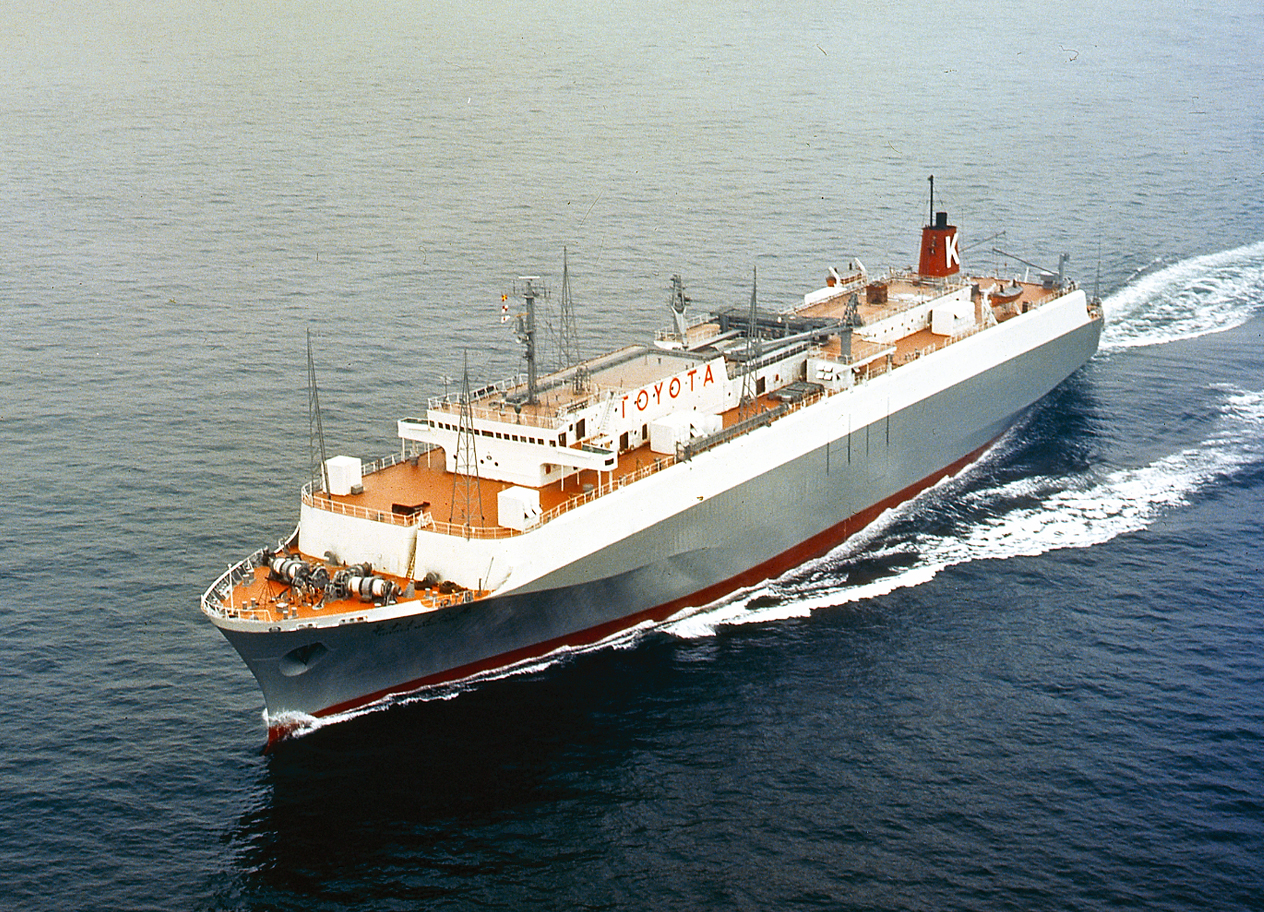
Toyota Maru No. 10, Japan’s first pure car carrier (PCC)
-
1971/ Showa 46
Completion of Hakuyo, Japan’s first small-size submersible work vessel
It is able to move freely along continental shelves at depths of up to 300 meters.
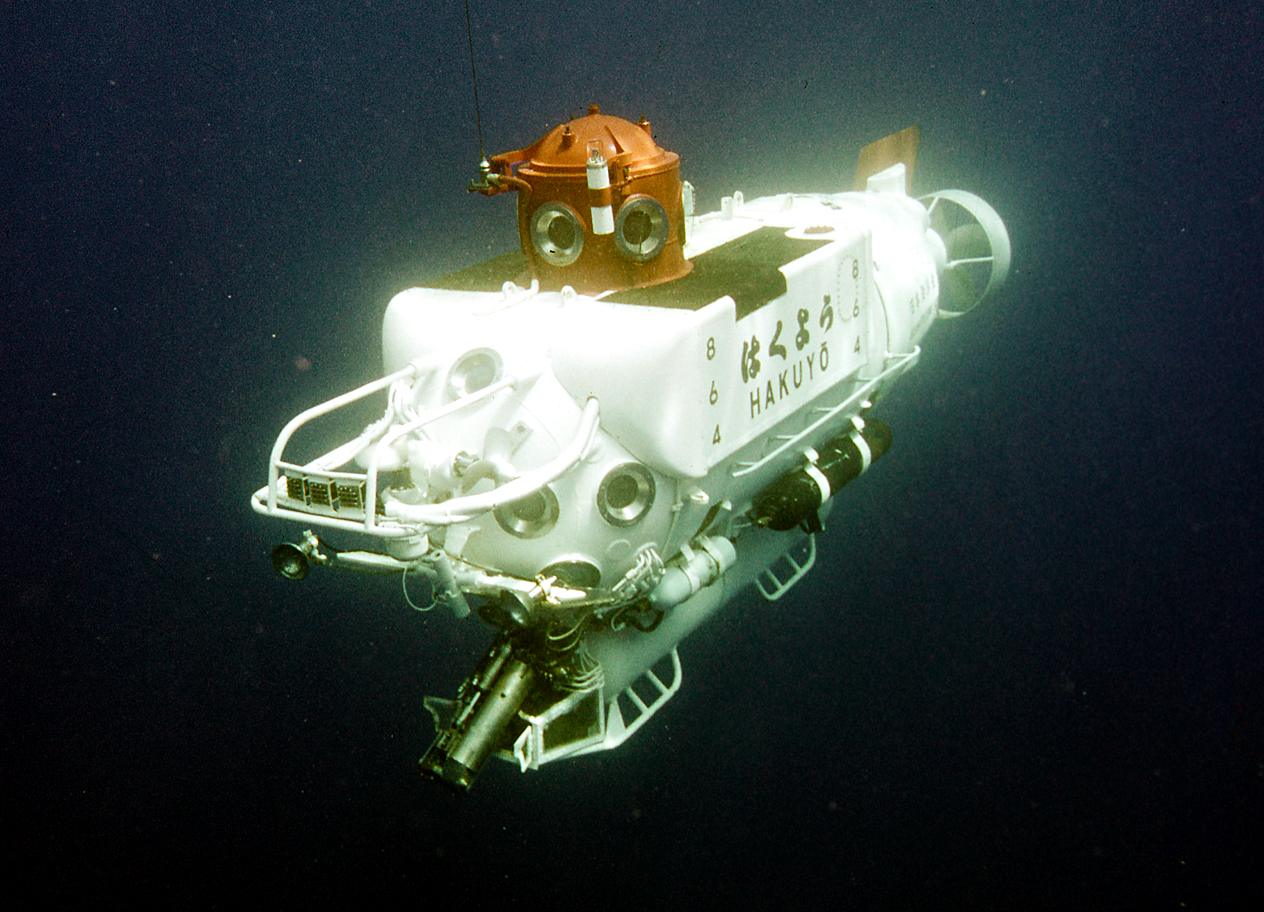
Hakuyo, Japan’s first small-size submersible work vessel
-
1971/ Showa 46
Completion of Uzushio, Japan’s first teardrop-shaped submarine
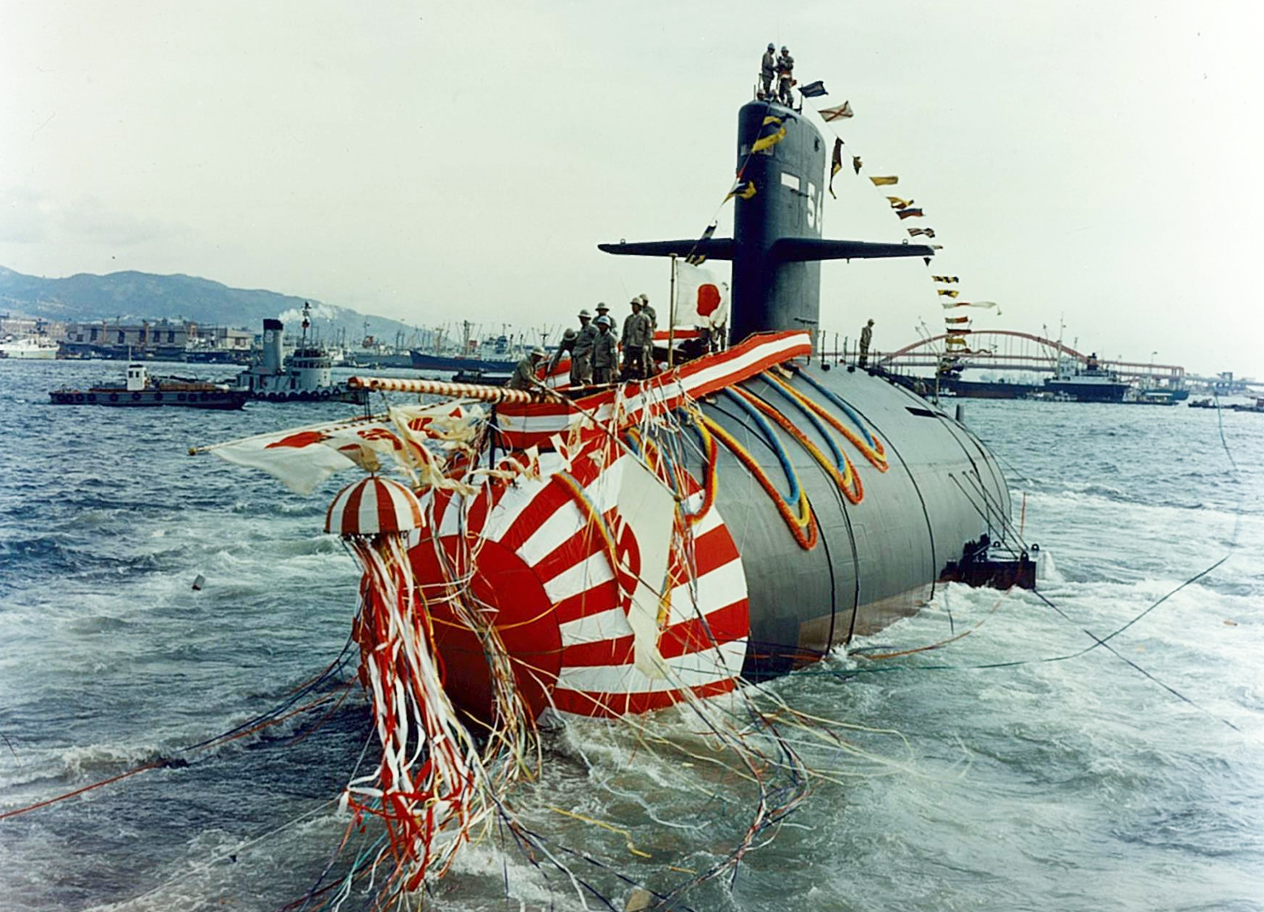
Uzushio, Japan’s first teardrop-shaped submarine
-
1972/ Showa 47
Completion of Sunflower, Japan’s largest and fastest (at the time) car ferry
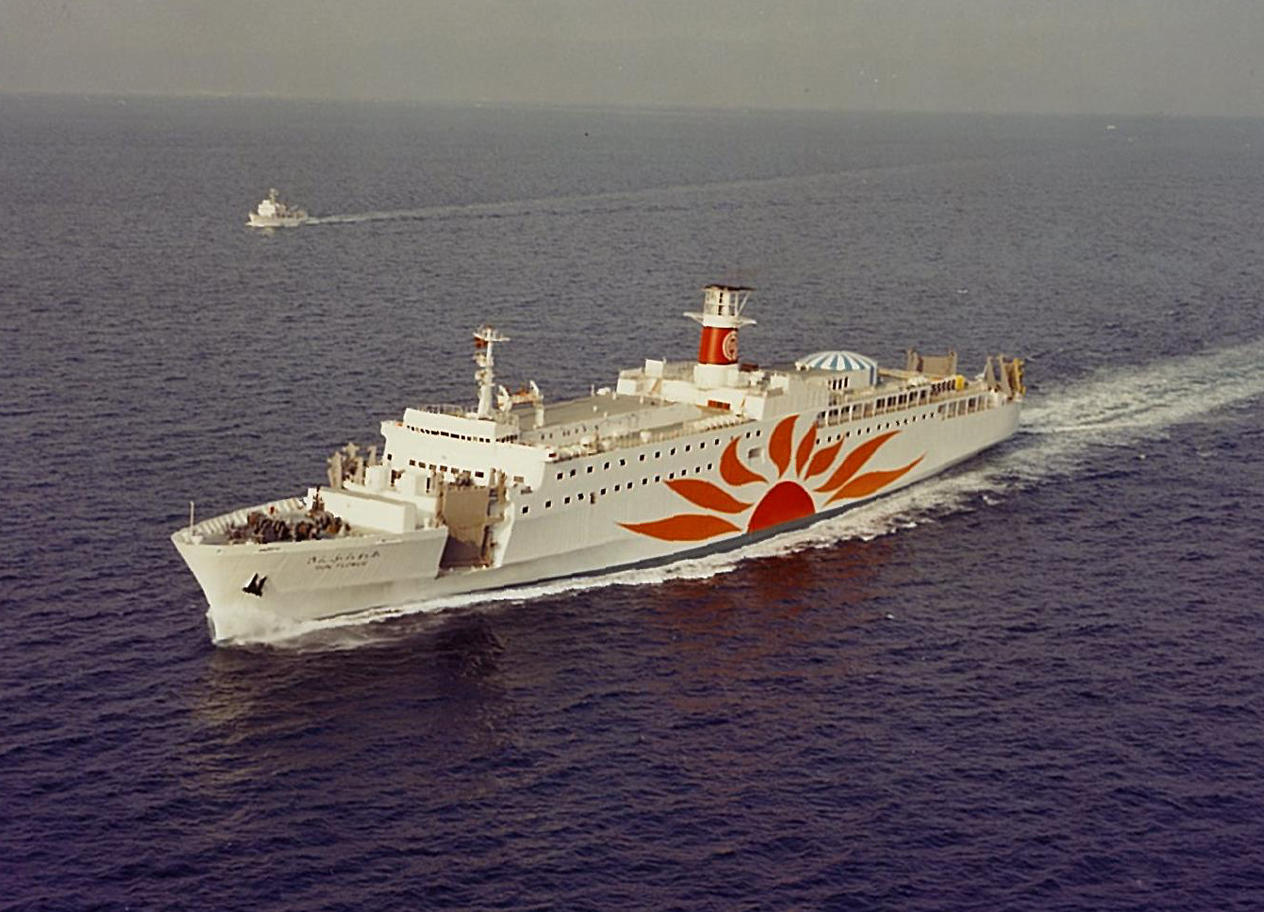
Sunflower, Japan’s largest and fastest (at the time) car ferry
-
1981/ Showa 56
Completion of the Golar Spirit, the first LNG (liquefied natural gas) carrier constructed outside of Europe and the United States
The LNG carrier carries natural gas, which had started to gather attention as clean energy, keeping it at a temperature of -163°C. It adopts the “Kawasaki Panel System,” our own developed tank insulation system.
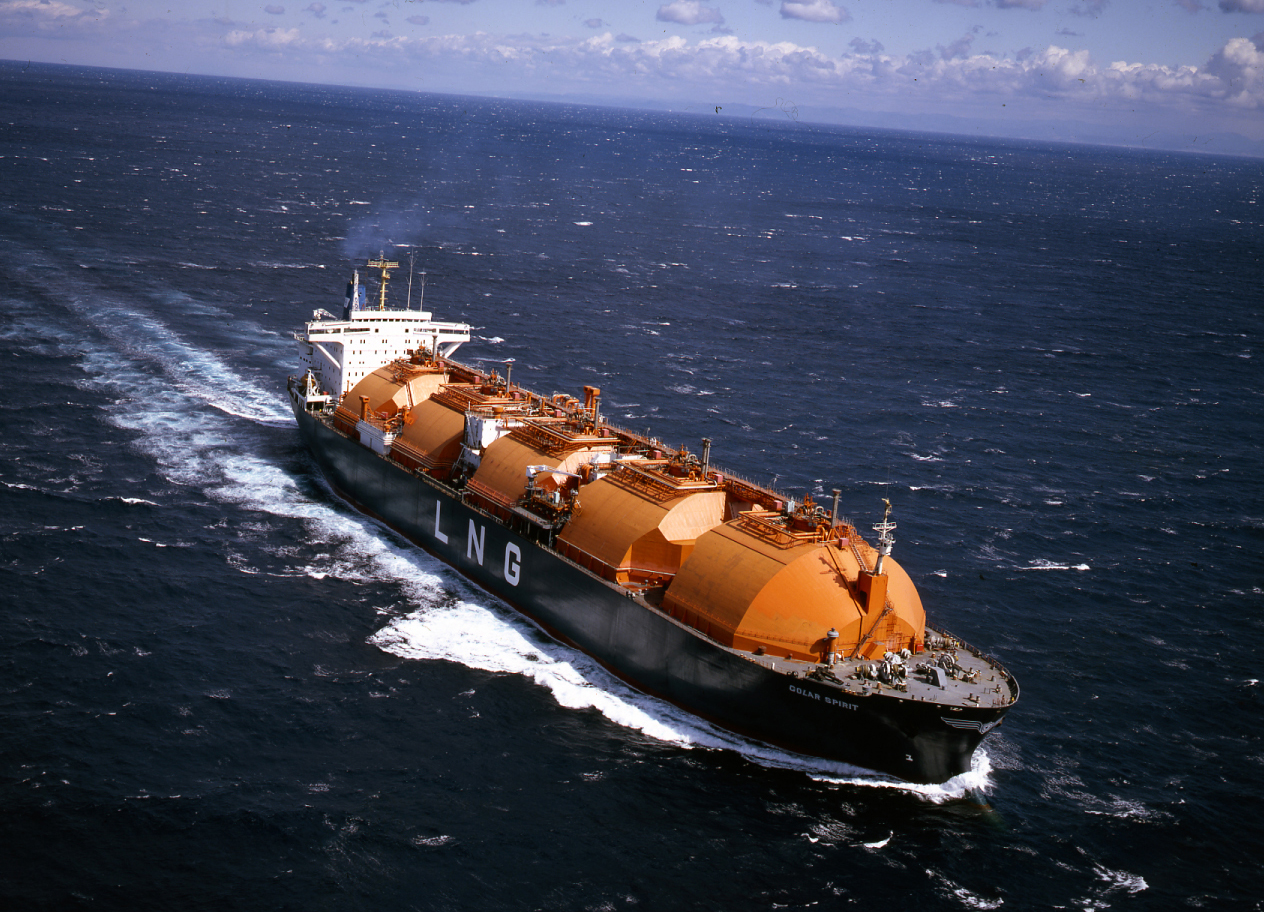
LNG carrier, Golar Spirit
-
1985/ Showa 60
Completion of Japan’s first deep-submergence rescue vehicle
It plays a role in safely rescuing crew from submarines that are unable to surface due to unexpected accidents. It was installed on the first submarine rescue mother ship, Chiyoda.
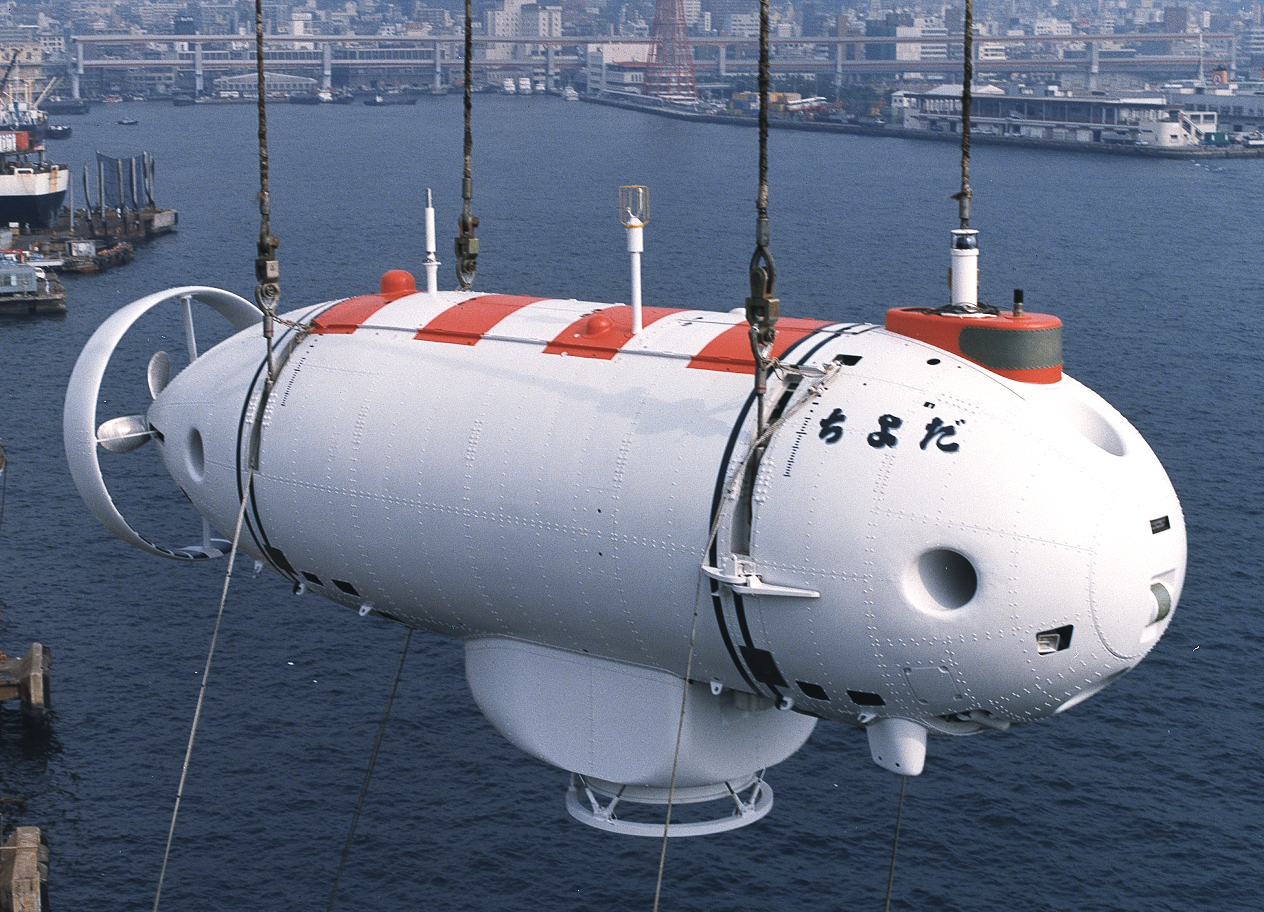
First submarine rescue mother ship, Chiyoda
-
1989/ Heisei 1
Completion of Tsubasa, the first Japanese-made Jetfoil

Jetfoil Tsubasa
-
1994/ Heisei 6
Completion of Hayate, a Techno Super Liner model ship tested in actual sea conditions
A model ship to be tested in actual sea conditions was constructed of the national project Techno Super Liner, an ultra-high-speed ship (cruising speed of 50 knots, or approximately 93 kph), and has successfully completed its operational testing at sea.
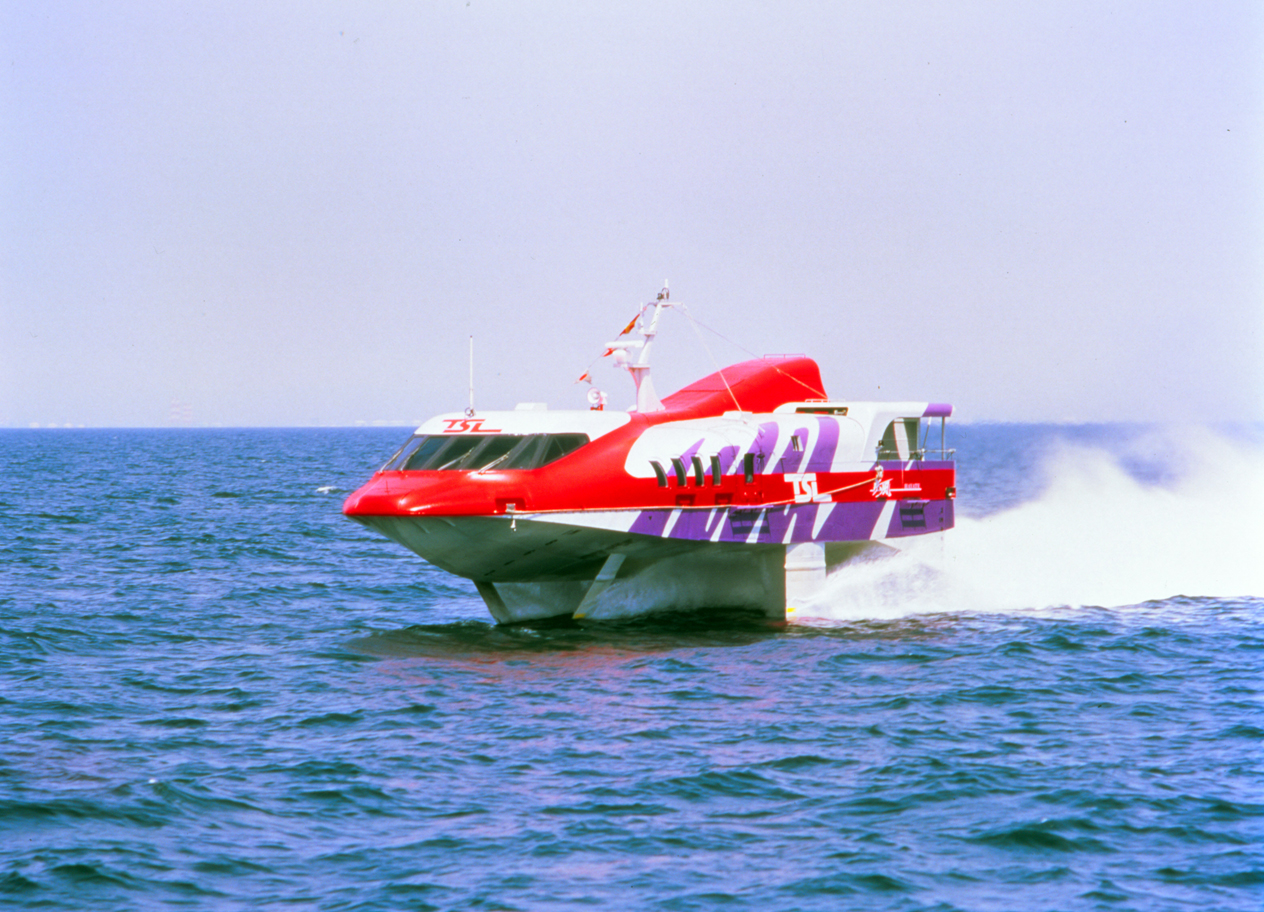
Hayate, a Techno Super Liner model ship tested in actual sea conditions
-
1995/ Heisei 7
Establishment of joint venture company Nantong COSCO KHI Ship Engineering Co., Ltd. (NACKS) in China
Agreement with China Ocean Shipping (Group) Company (COSCO) (currently China COSCO Shipping Corporation Limited)
*Renamed Nantong COSCO KHI Ship Engineering Co., Ltd. in 2018.
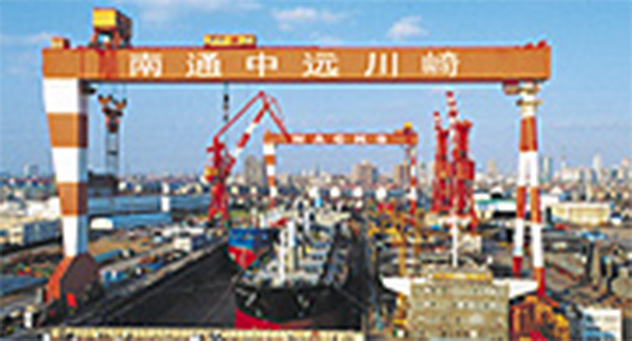
Establishment of joint venture company Nantong COSCO KHI Ship Engineering Co., Ltd. (NACKS) in China
-
1998/ Heisei 10
Completion of the lead ship of the Oyashio-class submarines, the second Oyashio
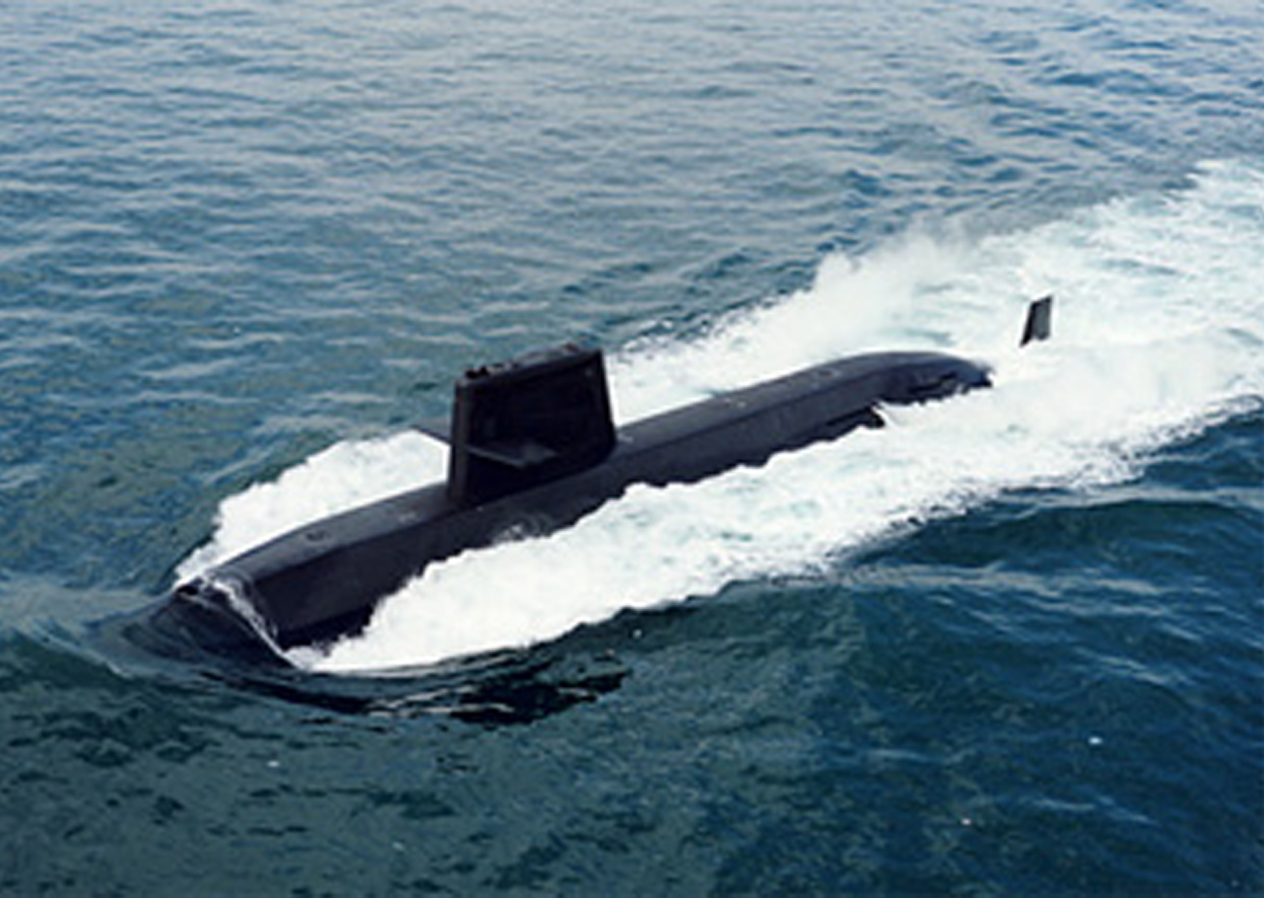
Lead ship of the Oyashio-class submarines, the second Oyashio
-
2002/ Heisei 14
Establishment of Kawasaki Shipbuilding Corporation with the spinning off of the ship division. Becomes independent from Kawasaki Heavy Industries.
-
2003/ Heisei 15
Completion of Shinjumaru No. 1, Japan’s first LNG carrier for coastal shipping (using a pressurized low-temperature tank system)
With natural gas gaining attention as a next-generation clean energy source, our company has accumulated experience in the construction of LNG carriers.
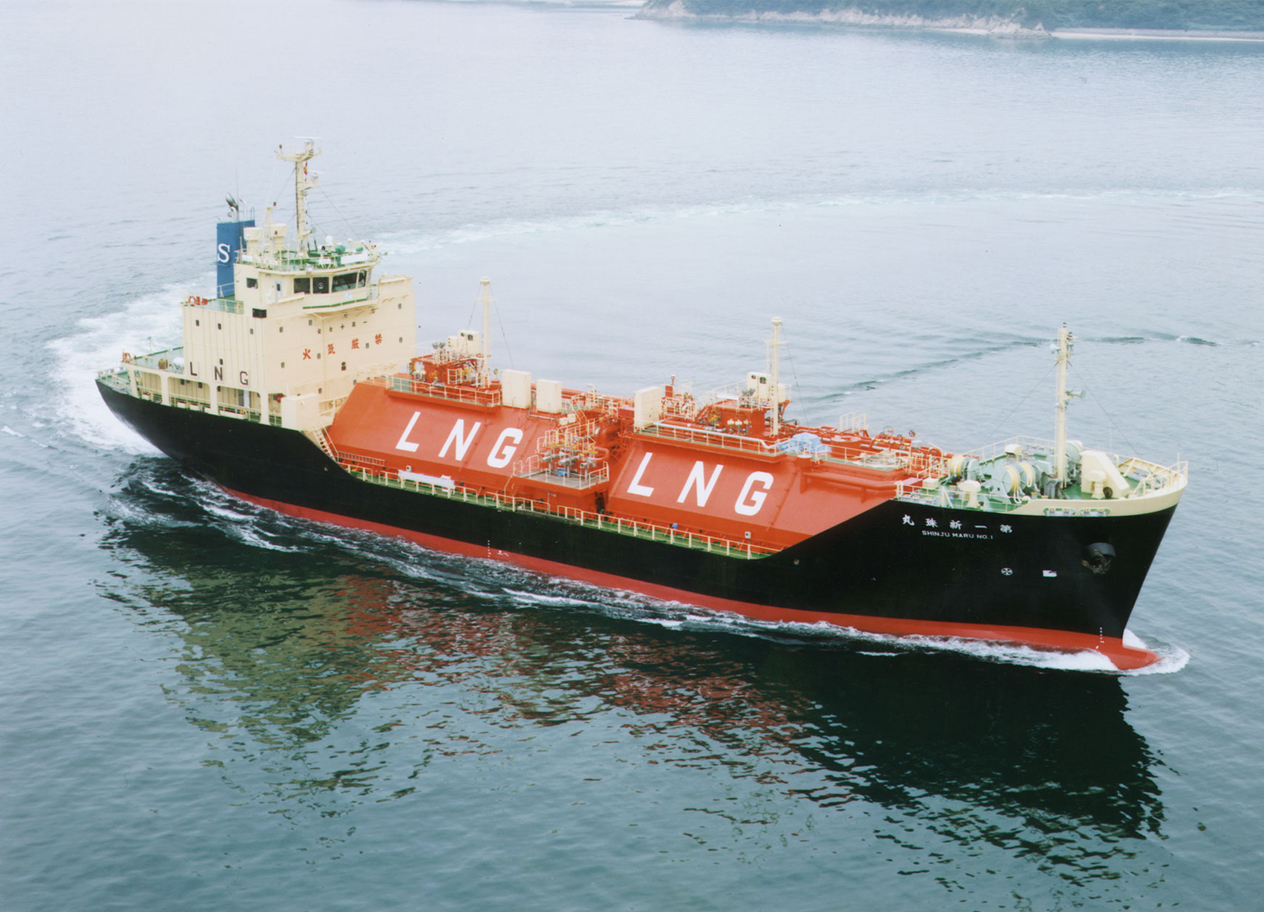
Shinjumaru No. 1, Japan’s first LNG carrier for coastal shipping (using a pressurized low-temperature tank system)
-
2004/ Heisei 16
AUV (Autonomous Underwater Vehicle) prototype, Marine Bird successfully charged at underwater station.
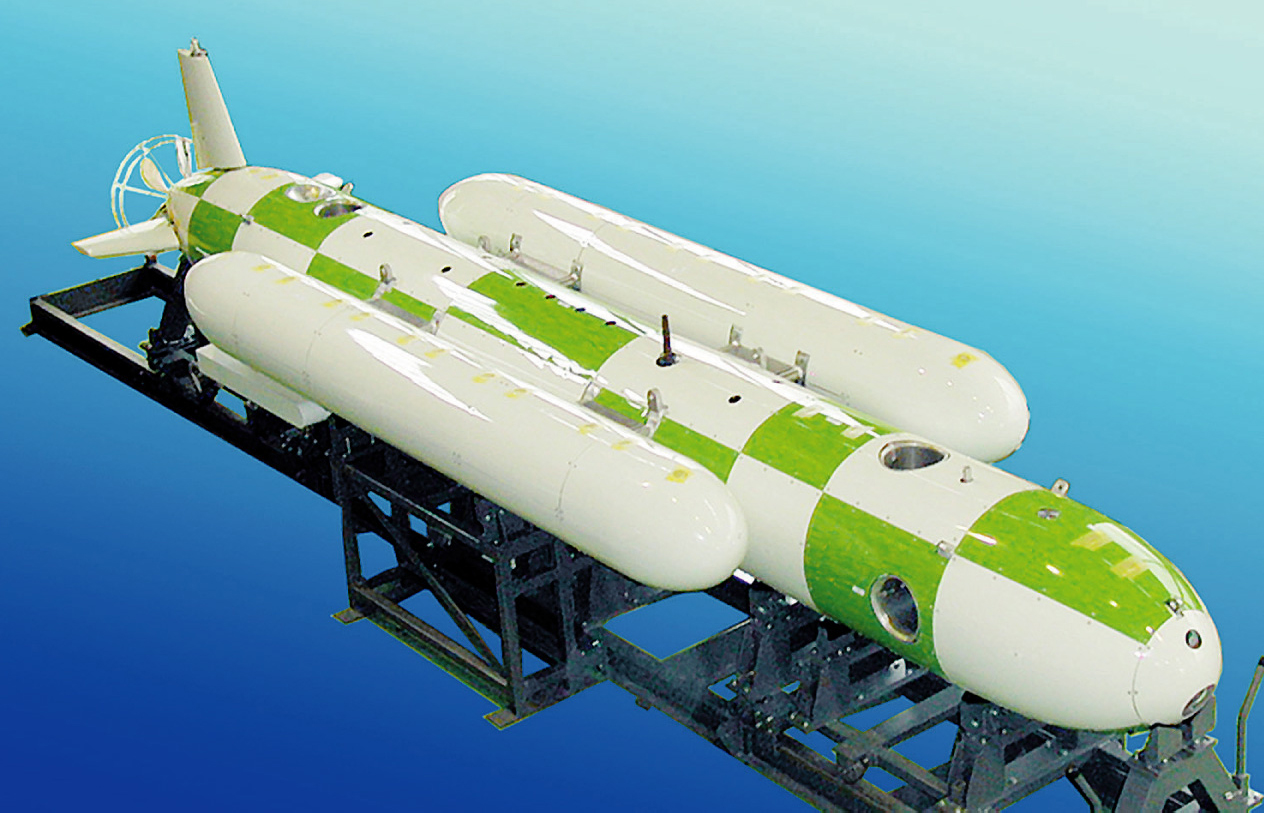
AUV (Autonomous Underwater Vehicle) prototype, Marine Bird
-
2007/ Heisei 19
Establishment of second shipyard in China, Dalian COSCO Shipbuilding Industry Co., Ltd. (DACKS)
Investment by COSCO Group and NACKS.
*In 2012, it was renamed Dalian COSCO KHI Ship Engineering Co., Ltd. (DACKS)
*In 2018, it was renamed Dalian COSCO KHI Ship Engineering Co., Ltd. (DACKS)
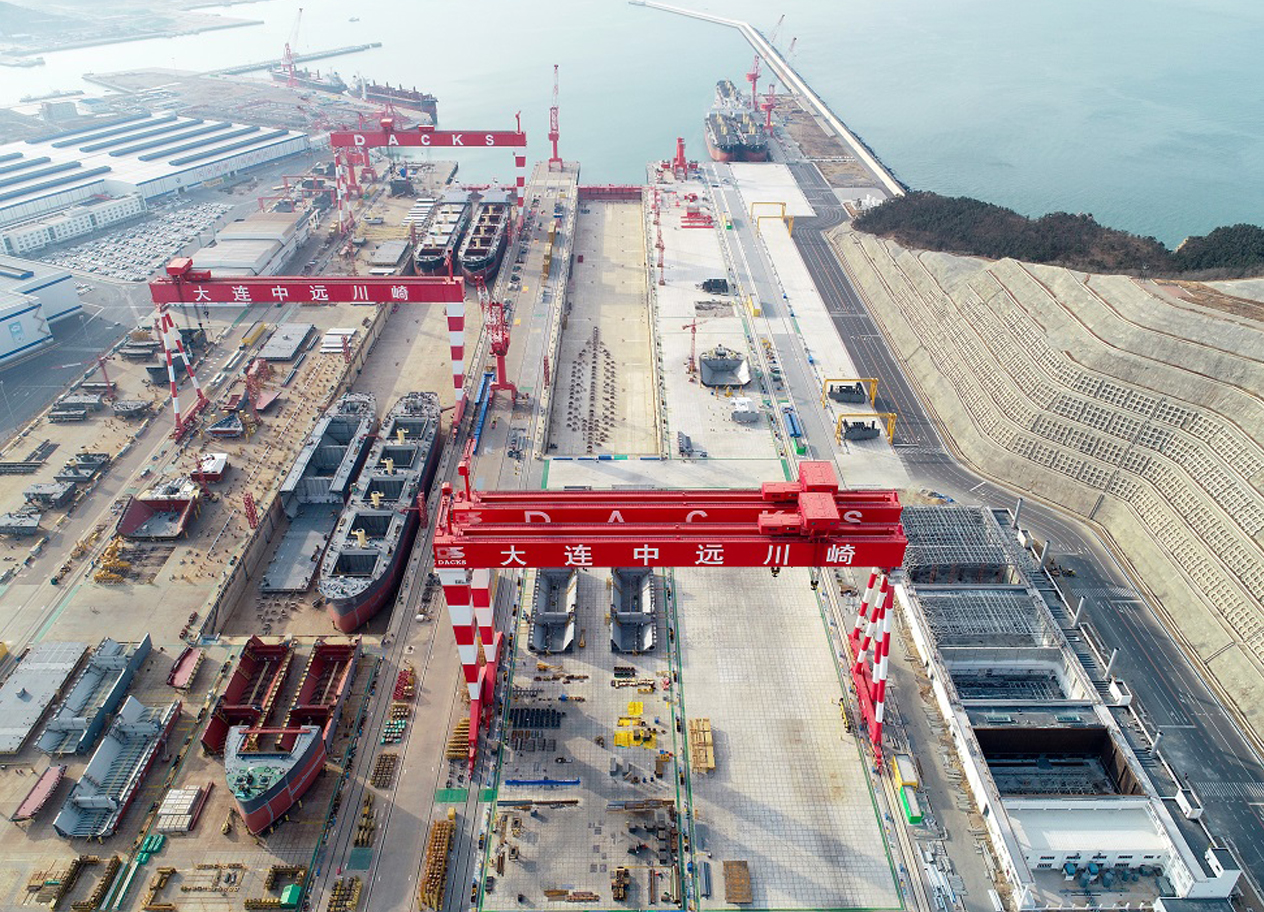
Second joint venture shipyard in China, Dalian COSCO KHI Shipbuilding Industry Co., Ltd. (DACKS)
-
2010/ Heisei 22
Kawasaki Heavy Industries and Kawasaki Dockyard are remerged
It made a fresh start as the Ship & Offshore Structure Company.
-
2016/ Heisei 28
Completion of Auto Eco, world’s first LNG-fueled car carrier, at NACKS
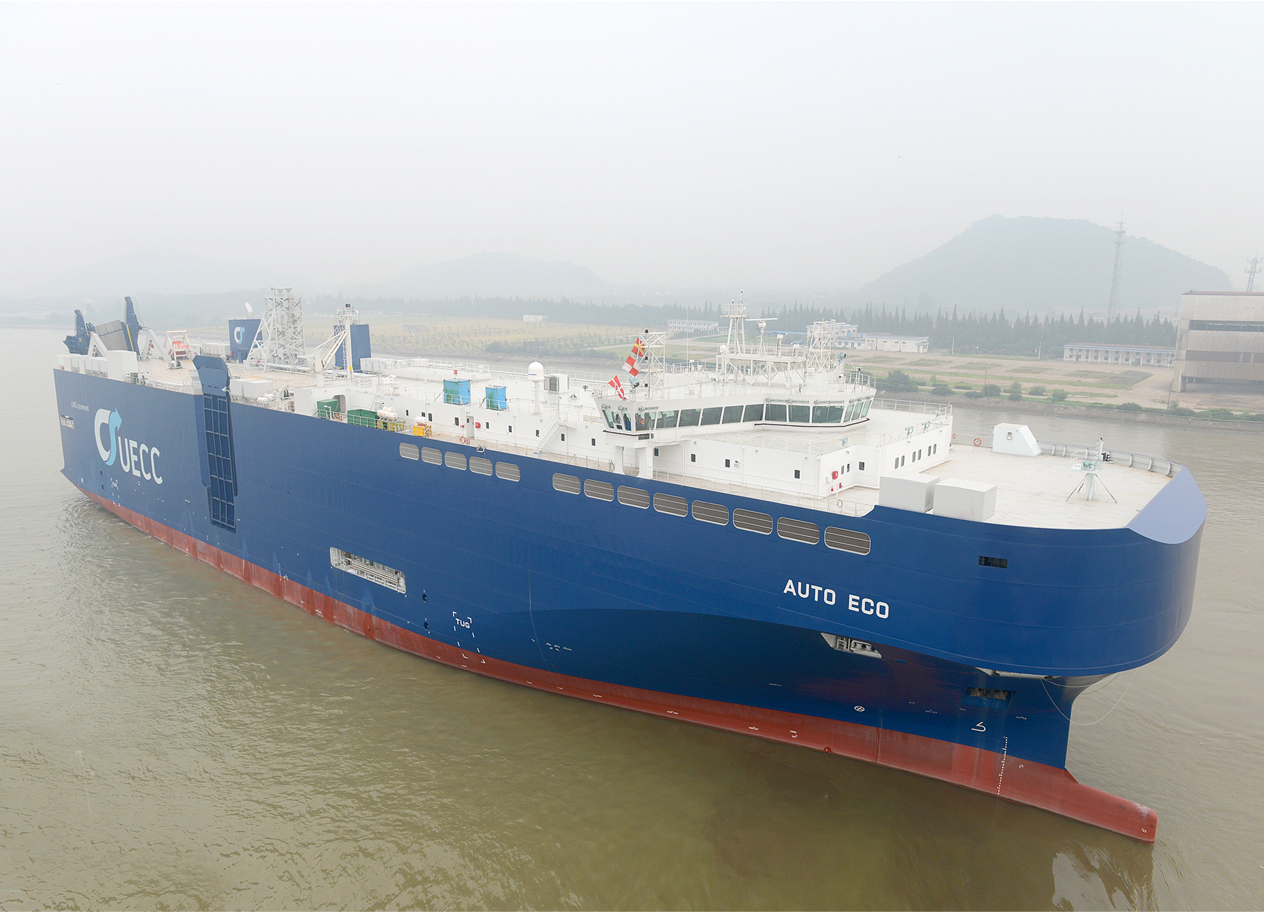
Auto Eco, world’s first LNG-fueled car carrier
-
2019/ Heisei 31
Launching of world’s first liquefied hydrogen carrier ship, Suiso Frontier
It was developed to safely transport large quantities of liquefied hydrogen cooled to –253°C and at 1/800 of its original gas-state volume over long distances by sea.
Kawasaki Heavy Industries: Launching ceremony for the liquefied hydrogen carrier ship Suiso Frontier
-
2022/ Reiwa 4
World’s first liquefied hydrogen carrier arrives at Victoria, Australia
World’s first liquefied hydrogen carrier, Suiso Frontier, departed from Japan, made its first international voyage, and arrived in Australia. As we work toward achieving carbon neutrality and hopes continue to grow for the utilization of hydrogen energy, this is the world’s first large-scale initiative to transport liquefied hydrogen internationally. It brings us even closer to successfully establishing a commercial-scale liquefied hydrogen supply chain.